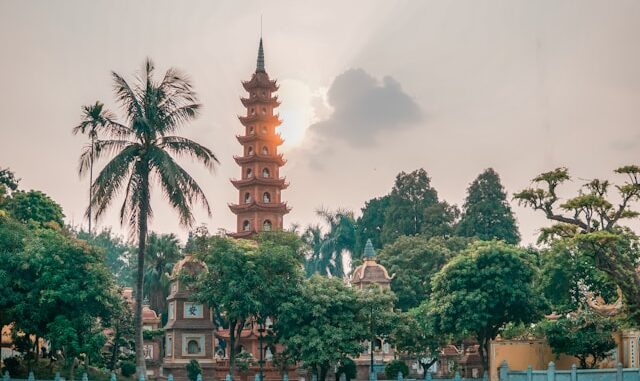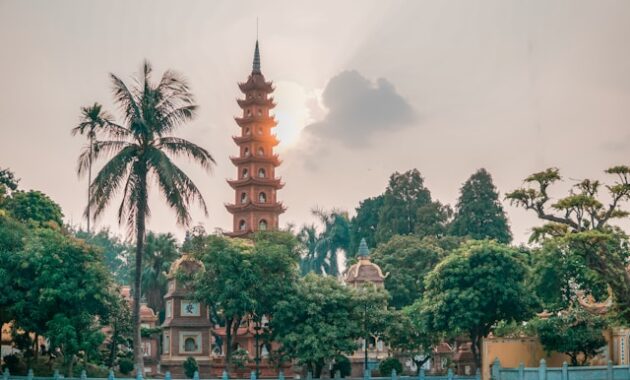
Hanoi, the capital city of Vietnam, is a fascinating blend of ancient traditions and contemporary influences. At the heart of this captivating city lies the Old Quarter, a district that perfectly embodies the marriage of history and modern lifestyle. Steeped in centuries of culture, the Old Quarter is an essential destination for anyone visiting Hanoi. It is where the past seamlessly intertwines with the present, making it a vibrant and dynamic part of the city that never fails to captivate the imagination of visitors.
A Brief History of Hanoi’s Old Quarter
Hanoi’s Old Quarter, often referred to as the “36 Streets,” has a history that dates back over a thousand years. Originally established during the Ly Dynasty (11th century), this area was once home to artisans and merchants who specialized in various trades. Each street in the Old Quarter was traditionally dedicated to a particular type of craft or trade, such as silk weaving, metalwork, and food production. These specialized streets earned the area its name, as each one had a distinct identity tied to its craft.
Over time, Hanoi’s Old Quarter developed into a bustling commercial center. The streets became vibrant markets where local products were exchanged, and the area gradually expanded into the energetic hub that it is today. Despite the influx of modern development and urbanization, the Old Quarter retains much of its historic charm, with narrow lanes, French colonial architecture, and ancient temples standing as a testament to its rich cultural heritage.
The Architecture of Hanoi’s Old Quarter: A Fusion of Past and Present
One of the most remarkable aspects of the Old Quarter is its architectural diversity, which beautifully blends traditional Vietnamese and French colonial influences. As you walk through the area, you’ll notice how the narrow, winding streets are lined with buildings showcasing a mix of traditional wooden houses, French-style villas, and art deco buildings. This unique architectural fusion creates a distinctive ambiance that is both nostalgic and modern.
The most iconic feature of Hanoi’s Old Quarter is its narrow streets and crowded alleys, which reflect the area’s historical layout. The buildings are often only a few stories high, with ornate facades, decorative ironwork, and wooden balconies. These structures are often adorned with traditional Vietnamese features like tiled roofs, wooden shutters, and hanging lanterns, giving the district a timeless atmosphere.
Among the most notable landmarks in the Old Quarter is the St. Joseph’s Cathedral, an impressive example of neo-Gothic architecture. Built by the French in the late 19th century, this cathedral stands out amidst the colonial buildings and adds a European touch to the landscape. It is a symbol of the cultural fusion that defines the Old Quarter and serves as a reminder of Hanoi’s colonial past.
Vibrant Street Life: A Snapshot of Modern Hanoi

While Hanoi’s Old Quarter is a treasure trove of history, it is also a dynamic and thriving district that pulses with modern energy. The streets are constantly teeming with motorbikes, street vendors, and locals going about their daily lives. The hustle and bustle of the area are unmistakable, and it is this energy that gives the Old Quarter its unique charm. The combination of historic sites and vibrant street life makes it a must-visit destination for anyone interested in experiencing the real Hanoi.
Walking through the Old Quarter, you will be greeted by the sights and sounds of local markets, street food stalls, and the occasional sound of traditional music echoing through the streets. The markets are a feast for the senses, with fresh produce, spices, textiles, and handcrafted goods available for sale. Whether you’re looking to buy souvenirs or simply want to observe the local way of life, these markets offer a glimpse into Hanoi’s ever-changing but deeply rooted cultural identity.
At night, the Old Quarter transforms into an even more lively and vibrant space. The streets are illuminated by colorful lights, and many of the cafes and restaurants spill out onto the sidewalks. It is during these hours that the Old Quarter truly comes alive, with locals and tourists alike enjoying the evening atmosphere over a cup of Vietnamese coffee or a plate of pho.
The Best Things to Do in Hanoi’s Old Quarter
Exploring Hanoi’s Old Quarter is an adventure in itself. Whether you’re a history buff, a food lover, or simply a curious traveler, there is something for everyone in this district. Here are some of the top activities to enjoy while exploring the Old Quarter:
1. Visit the Hoan Kiem Lake
Hoan Kiem Lake, or Lake of the Returned Sword, is a serene and picturesque spot located at the heart of the Old Quarter. The lake is surrounded by lush greenery and historical monuments, including the Ngoc Son Temple, which sits on a small island in the lake. Visitors often come here to relax, enjoy the view, or take a boat ride. The peaceful atmosphere of the lake provides a stark contrast to the hustle and bustle of the surrounding streets.
2. Explore the Local Markets
The Old Quarter is famous for its street markets, where you can find everything from local produce to handmade goods. Dong Xuan Market is the largest market in the district and a must-see for anyone interested in shopping for souvenirs, clothing, and local handicrafts. The narrow aisles of the market are lined with vendors selling colorful textiles, spices, and jewelry, offering a sensory overload that is sure to leave a lasting impression.
3. Savor Traditional Vietnamese Street Food
No visit to Hanoi’s Old Quarter is complete without sampling the incredible street food. The area is renowned for its variety of local delicacies, including the world-famous pho, bun cha, and egg coffee. The streets are lined with food stalls and small eateries, where you can indulge in these delicious dishes while taking in the vibrant atmosphere of the district. Be sure to stop by Bun Cha Huong Lien, the restaurant where former President Obama enjoyed a meal during his visit to Hanoi.
4. Discover the History at the Hanoi Ancient House
For a glimpse into Hanoi’s past, visit the Hanoi Ancient House on Ma May Street. This traditional house offers a fascinating look at what life was like for the merchant families who once lived in the Old Quarter. The house is well-preserved, with wooden beams, antique furniture, and traditional décor, giving visitors a sense of the city’s rich cultural history.
5. Admire the French Colonial Architecture
As you explore the Old Quarter, take time to admire the beautiful French colonial buildings that dot the area. These structures are a legacy of the French colonial period, and their elegant design contrasts with the traditional Vietnamese architecture found elsewhere in the district. Many of these buildings now house cafes, boutiques, and galleries, making them an essential part of the modern landscape of the Old Quarter.
Conclusion: A Perfect Blend of Tradition and Modernity
Hanoi’s Old Quarter is a destination that offers visitors a unique blend of history, culture, and modernity. It is a place where the past and present coexist harmoniously, creating a vibrant and captivating atmosphere. Whether you’re exploring its historic streets, indulging in delicious street food, or simply soaking in the sights and sounds of the bustling markets, the Old Quarter has something to offer every type of traveler.
For those looking to experience the soul of Hanoi, there is no better place to start than the Old Quarter. It is a district that not only tells the story of the city’s rich past but also reflects the energy and dynamism of its modern lifestyle. As Hanoi continues to evolve, the Old Quarter remains a testament to the city’s ability to balance tradition with progress, making it a truly unforgettable destination.